As Iceland continues its Cinderella story at the Euros, Mark Franek reflects on six summers of semi-pro football in the country of northern lights and Hidden Folk.
Gretar is shaking out a handful of fish oil and applying it to his hamstrings and quadriceps, smearing the putrid substance in circles over his pale white skin to warm up his muscles. We are in a locker room about fifty miles south of the Arctic Circle preparing for a soccer match in Iceland’s second division. The coach goes over the starting line-up and gives the team’s eleven starters and six substitutes a guttural pep-talk—incomprehensible to me, an American who speaks no Icelandic—that builds to a chorus of affirmations. I join the affirmations. Then I reach for Gretar’s bottle.
The world has become enamored with the Iceland men’s national team, which advanced to the knockout stage of the Euro 2016 tournament last week. But across the country, Icelanders are partial to their hometown teams—like Tindastoll, the club for which I suited up for six straight summers—and they take their summer soccer very seriously.
Tonight Tindastoll is hosting a team called Thor. Thor’s bus is a big Greyhound affair with leather seats and a toilet—fancy wheels for a bunch of semi-professionals. Walking by it on the way to the locker room before the game I noticed a sign in the front window, which Gretar later translated: “You will lose.”
Thor’s supporters have long since arrived by caravan and they’ve joined the home crowd at the edge of the pitch, where teenagers toting Thermoses of hot chocolate and coffee have been working the crowd. Even in mid-June, many fans are decked out in fair-isle sweaters to keep warm. Spectators sit on grass steps cut into the side of a steep slope. Beyond the wooden scoreboard, about a goalie’s dropkick from the edge of the pitch, laps the Arctic Ocean.
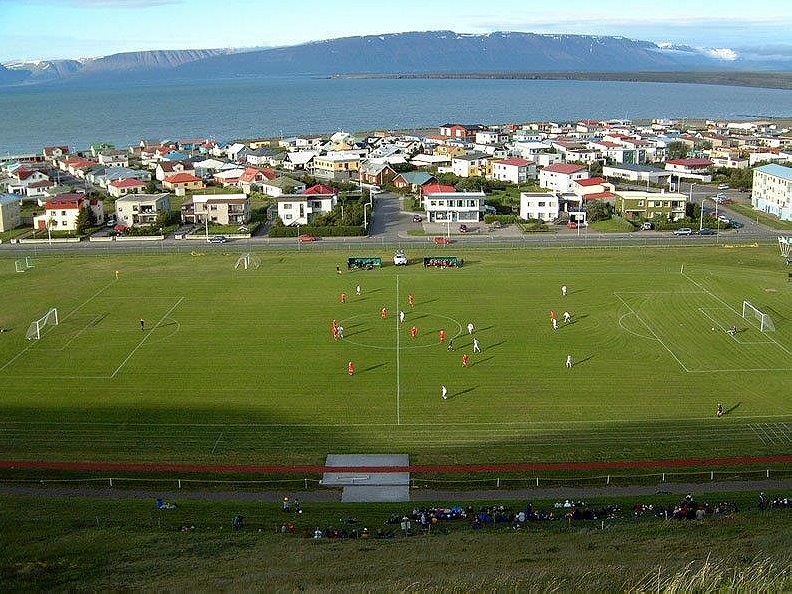
Both teams fan out at the center of the playing field, which is nearly the quality of a golf-course putting green. Runar, the announcer, rattles off the names of the starters, which even to my multiple-summers-in-Iceland ear sound like three people—especially since every player’s last name ends with the suffix “-son.” There’s Gretar, Himmi, Snaevar, Sverrir, Ingi, Donni, Viktor, Arni, Gunni, (me), and Dagur, the team’s only teenager, who is starting in his first game because his older brother suffered a broken collarbone in our last outing.
Most of the starting players have day jobs, but the club supplements the most talented players’ income by paying for things like summer rent and food. Some players coach youth teams, drawing relatively large stipends, or work a medley of odd jobs around town, working leisurely, especially on game days.
Tindastoll is named after the snow-capped peak that rises majestically behind Saudarkrokur, Iceland’s second-largest town on the north coast. Population: 2,689—plus one American. The rest of the year, I’m a high-school English teacher and varsity soccer coach in Philadelphia.
My Viking adventure began with an invitation from a student. For many years, an ancient map was tacked to the back wall of my classroom, left by a previous history teacher. Aside from some indecipherable graffiti in the Pacific Ocean, the map had been forgotten by my charges. That was until a visiting Icelandic student, David Runarsson, announced during the first week of school, “There’s something wrong with this map.” Sure enough, just off the southeast coast of Greenland, where Iceland should be, there was nothing but water.
During his year with us David told a great many stories about life in Iceland, and in the meantime helped lead the school soccer team to the state championship. At the end of the academic year, David invited me to Iceland for the summer to play soccer for the local club. David’s father was a loyal supporter of Tindastoll, and David served as my first and last “agent,” a role he played more out of gratitude for his year in America than talent selection. I was still single and in shape (only a few years out from a stint at a major Div. I soccer program) and had nothing to do until September. So I jumped at the chance.
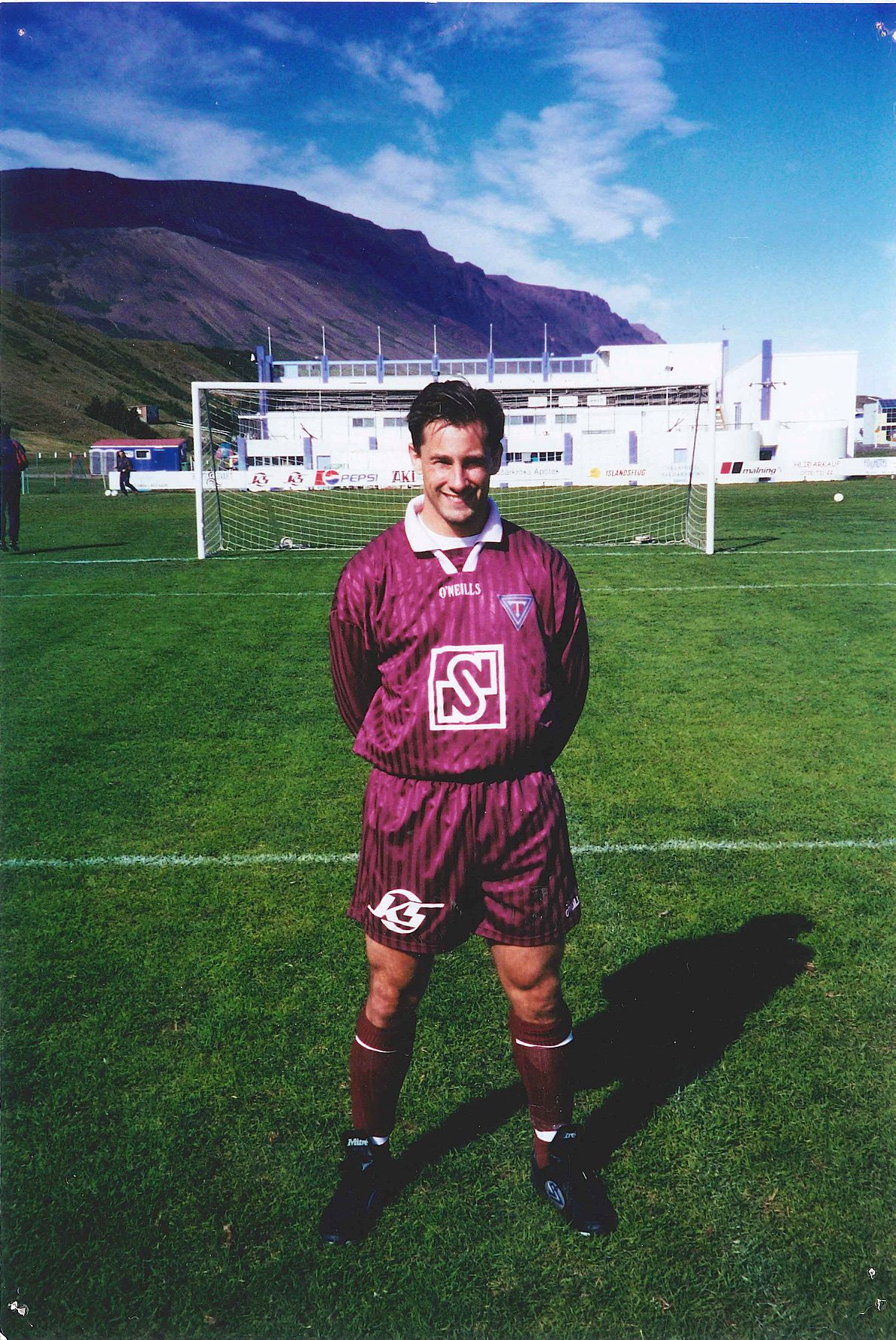
Saudarkrokur is tucked between a mountain and the mouth of a fjord. If Iceland were a clock the size of Ohio, Saudarkrokur would be about 11 p.m. (or, in the spot of Toledo). Nearly all of Iceland’s 323,000 people live somewhere on the numbers. People travel inland primarily during the summer months, and then it’s solely for adventure.
Each large town around the coast has its own team, distinct colors, and loyal supporters—and it’s easy to imagine how these teams, to some degree, have replaced the warring Viking chieftains and their clans of a thousand years ago, who often assembled on these same fields to test their bravery or settle a grievance over some ignominy that doesn’t have to be imagined. Just pick up any one of the renowned Icelandic Sagas, which in some places read like an unadulterated, yet somewhat-fantastical 10th-century police report. From Egil’s Saga:
One morning Thorstein awoke at sunrise and climbed a hill where he could see his neighbor’s cattle on Thorstein’s land once again. Thorstein found his neighbor Thrand sleeping on top of a bluff with his shoes off, and poked him awake with the handle of his axe: “I’m the owner of this land and the pastures belonging to your people are on the other side of the stream.” Before Thrand could put on his shoes, Thorstein swung his axe hard and brought it down on Thrand’s neck, leaving it dangling on his chest. After that, Thorstein gathered stones, covered Thrand’s body, and went back to Borg.
Like most places identified in the Sagas, Borg is a real place. Later in the summer we will play a team from Borg (now called Borganes), and after the game a friend will take me to the presumed spot of Thrand’s beheading, which is about half a mile out of town and just behind a row of moss-covered boulders. The boulders look psychedelic in the Arctic light, and you half expect to find Thrand’s severed head lying nearby.
Traveling around the island, it’s not long before you feel like you’re a part of a grand cycle, as timeless as the fjords and mountains that seem to have been cut from and pounded into the land with help from Thorstein’s axe. The irony is that Iceland is relatively new in geological time, one of the last islands to rise—literally, ooze out of the sea—the result of two tectonic plates (the North American and the Eurasian) moving ever so slowly apart. Iceland is home to spectacular geologic sights, from lava fields to geysers to waterfalls with whimsical names, like Godafoss, waterfall of the gods.
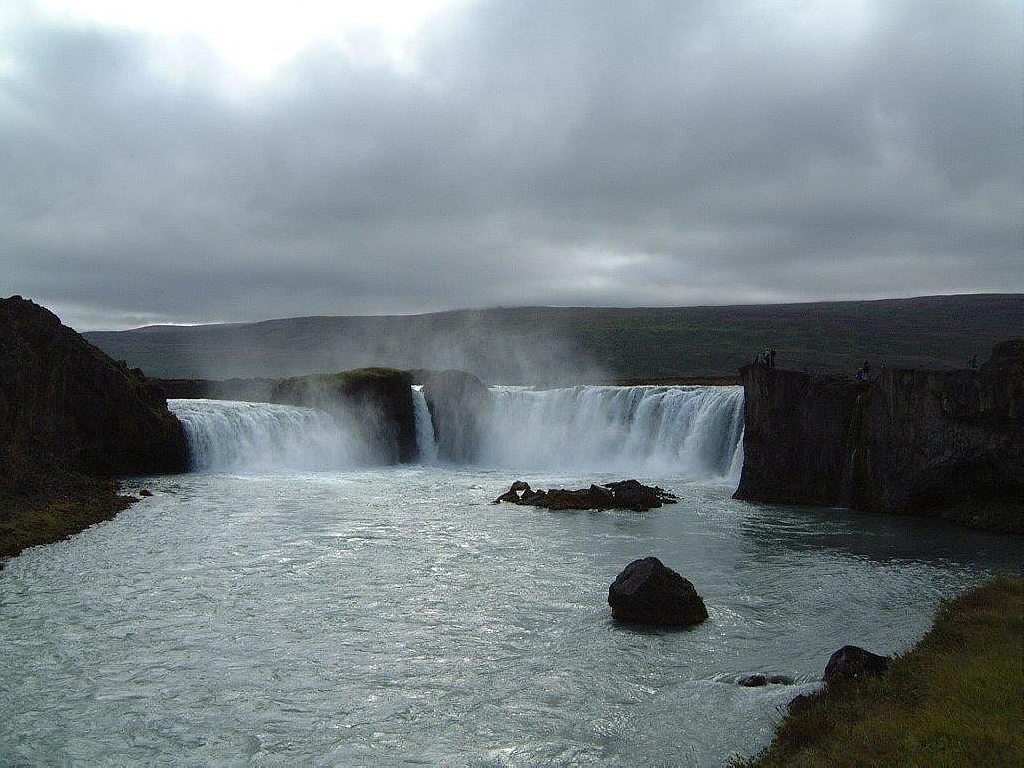
The evening of the game against Thor, like all my summer nights in Iceland, the sun descends low on the horizon, and the temperature drops a few more degrees centigrade. But the fans hardly notice. They cheer and whistle as the men battle up and down the pitch. A little before 10 p.m., the grass still illuminated entirely by natural light, we finally fall to Thor, 1-0.
In the locker room after the game we nurse our pride as Thor celebrates another victory. A fierce chant erupts from our opponent’s locker room a few paces down the hall. A thousand years ago we’d bury the dead and nurse our wounds. Tonight we throw our stinky uniforms in a pile and head off to the showers.
The place still smells like Gretar’s fish oil.
He’s utterly convinced that elves are living in his rock gardens
“See that big rock there? That’s a house, and that row of smaller stones, those are windows. Elves live there.”
I am standing with the team’s manager (also the guy who washes our uniforms), whose day job is a mix of farming and engine mechanics, and he’s pointing to a row of stones along the edge of his property. He’s utterly convinced that elves are living in his rock gardens—what Icelanders call huddlefolk, or hidden folk. Only a fortunate few can see them, he says. Usually children. Others just feel their presence and know they’re there.
As we walk his property he tells me that when he was eight or nine he was riding the tractor with his sister and slammed on the brake and the tractor flipped over, trapping the girl. Without thinking, he lifted the tractor and pulled her out and noticed that the steel bar had bent around her spine. “You don’t think I did that myself, do you? Bending that bar and lifting that tractor? I had help from the elves.”
After a Friday night game, and about an hour into the three-hour ride home, I decide to investigate the matter with the elves a little further. A few beers have quietly popped in the back of the bus and our coach has turned a blind eye.
I turn to a teammate, Sverrir, a jovial chap with a square jaw and a ferocious free kick. What do you think of the elves? I ask. Have you ever heard of them in your town? Sverrir grew up in Keflavik, home of Iceland’s only international airport, and thus the town with the most contact with the outside world. From 1951 to 2006, Keflavik hosted a U.S. naval airbase staffed by thousands of American grunts and officers and employing nearly 900 Icelandic civilians at its peak. I counted on Sverrir for an objective answer.
“They don’t come near the town. Too many foreigners.”
It’s hard to tell if Sverrir is just pulling my leg—his command of English and penchant for puns rivals that of a college English major. He attended university in the States and grew up on American movies, which, all through his childhood, were continually broadcast in English by Iceland’s two state-sponsored channels.
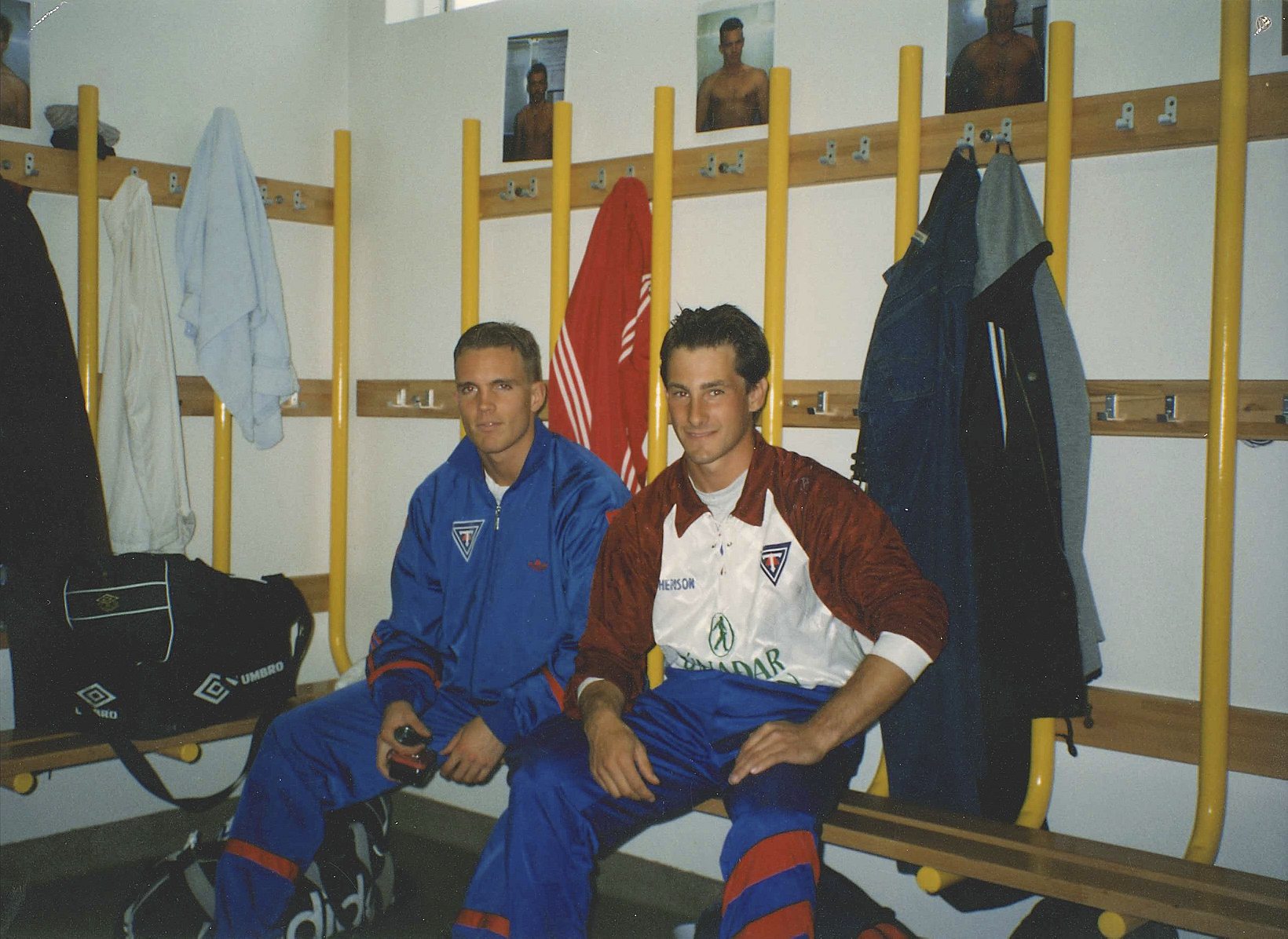
Steini, a bellicose forward with platinum blond hair, pops a can of beer and bellows skal huddlefolk!, toasting the hidden folk for the victorious goal he scored earlier in the evening.
I move to the front of the bus to speak to Gunni, the team captain and also the oldest player. Gunni was coaxed out of retirement to anchor the defensive line and often reads a book during long bus rides. He has an engineering degree and wears a tie to work every day.
“The hidden folk have a lot of homes near my grandfather’s farm and my grandmother is very fond of them,” he tells me.
I ask him if he’s been drinking. He chuckles at my own incredulity, but it isn’t a scoffing kind of chuckle. It’s the kind of gesture a father would give to a child.
He continues: “You know about frequencies, right? There are certain sounds a man can’t hear but a dog can hear. Well, maybe there are certain kinds of light or ways of seeing that a man can’t see—I don’t know.” He flashes a wide grin and I still can’t tell if he’s dead serious about the elves, or participating in a grand communal hoax at the expense of all foreigners.
Outside the window, in the half-light, we are coming down between a row of white-capped mountain peaks and a fjord, and way down below, strewn out across the Skagafjurdur Valley, are scores of boulders left like marbles on a giant’s playground. The whole valley is bathed in Arctic light, and waves of the fjord are shimmering as they crawl out to sea.
“Listen,” Gunni cuts short my whimsical musings on all things elfin. “You don’t have to believe what you don’t want to believe. Like me, I don’t believe in trolls.”
I ask him who believes in trolls. “Gisli,” he says.
Gisli is the head coach.

I met Gisli, another amicable fellow with perpetual three-day stubble, during my first practice in my inaugural season, the day after I arrived at Saudarkroker’s tiny bus station. The pitch and main practice field had not yet been opened, due to some stubborn late-May snow, and so practice was being temporarily held on a sheep field literally dotted with sheep.
My teammates—some would become friends for life—wore hats, gloves, and puffy winter jackets. Hard-plastic cones had been placed at odd intervals forming the appearance of a rectangular playing field. Old soccer nets, many with holes larger than the ball, hung from rusted steel frames. (Later I was told the nettings were leftover fishing nets.) Behind the goal on the far end of the field were the sheep. A few paces beyond the sheep, and peeking out from beneath the awning of a farmer’s stable, stood some inquisitive Icelandic (miniature) horses.
Gisli called the guys into a semi-circle for introductions. Then he held up his whistle and exclaimed slowly and in broken-English, “When I blow you, you run!” Several of my teammates laughed and tried explaining to Gisli—but he was having none of it, even though a smile formed on his lips moments before he stuck the whistle in his mouth and started blowing.
My Icelandic never got any better than Gisli’s English. I bought lessons on tape and tried studying during my months back in the States. But nothing took. For at least two summers I thought I was saying and ordering a “hot dog, with everything!”—a staple snack after a night of carousing—but instead I was saying “hot dog, I’m horny!” much to the amusement of my teammates.
Drinking in the cab is mandatory
It’s a typical Friday night and most of my teammates are gathered around a coffee table to drink beer and tell jokes. Music is playing. There are no drinking games and no TV unless it’s turned on to catch the latest round of soccer highlights.
A few women wander in wearing their standard Icelandic ensemble of stretch pants and spice-girl boots. Tables and chairs are moved to accommodate the swelling party. Empty beer cans and cigarette butts rapidly accumulate. People are bumping into one another. The music is turned up. At around 11:30, maybe midnight, a taxi appears in the half-light outside. We’re on our way to the local “bottle dance.”
We squeeze into the cab, each clutching bags with pint-sized bottles of beer or liquor—hence the name bottle dance. The night has officially begun.
The cab driver is often a parent or an older friend of a teammate. (Driving a cab on the weekends just another way to supplement the family income). Drinking in the cab is mandatory as the cab rises and falls, crisscrossing fjords, traversing ridges, and slicing between a few wayward sheep—which meander off the road, in no great hurry, as the driver honks the horn. The late-night sun gives the journey an element of the surreal.
The dance hall is a converted basketball gym at the top of a hill, strategically located at a crossroads within an hour’s drive from a half-dozen small towns. The crowd—which includes players from rival teams—are coming from similar house parties in their own towns, and the partygoers’ main reason for assembling at this crossroads on this night is to drink, dance, and be merry. Being merry means paying about twenty bucks at the door and dancing all night long with five- or six-hundred revelers to a live band bellowing out songs from the front stage of the gym.
Being merry means stumbling back and forth between the gym floor, the bathrooms (which both sexes seem to share), and outside to smoke/drink/flirt.
At around 4 a.m. the music stops, but not the party. Everyone is thrust outside; no one leaves yet. The sun is still hovering on the horizon, rising now. People continue to move in dance-like rhythms, except that there’s no music.
Each of my teammates finds a ride back home with his buddies and a few beers. Once back in town, cabs drop us off in groups of threes or fours, and people wander off to talk, smoke, drink a little more, and to watch the sun rise off the sea.
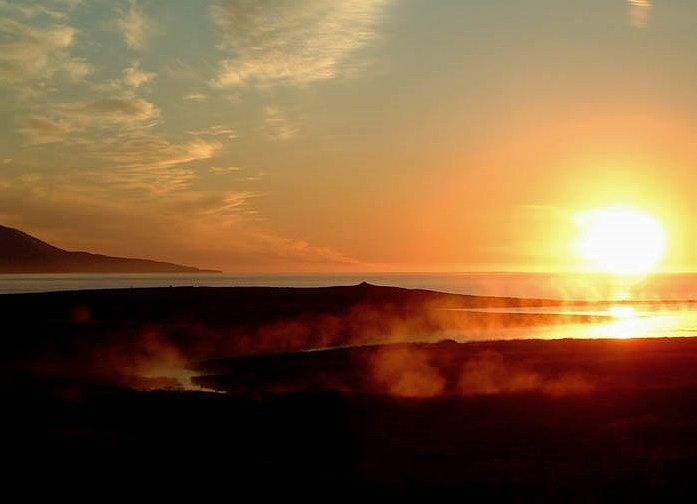
In Iceland the veil of winter starts falling in late August. Men and women stop mowing their yards at midnight. Deck chairs and tables are brought inside. Children vacate the playgrounds earlier in the evening, abandoning their swing-sets to the fierce autumn winds. The temperature drops another ten to fifteen degrees during the early morning hours as the Arctic sun dips almost completely below the horizon for two- to three-hour stretches, a harbinger of things to come.
Soon, I will be heading back to America to face rows of desks and new students, and eventually to waves of papers to grade. I am not ungrateful. Teaching permits my summers in Iceland. But like my Icelandic friends, I’m a little sad. Summer’s almost over.
It’s late one night not long before I depart for the States. The team is midway through our journey home from another match, and I see something outside that causes me to jump out of my seat and shout, “Stop the bus! Stop the bus!” When the bus finally comes to a stop I’m the first one out the door, looking up to witness a great swathe of green and purple and red flaring out across the gloaming.
My teammates slowly file out of the bus. “Ah, yes,” someone says, “the Northern Lights—they usually appear this time of year.”
My teammates and I stare up at the sky and fall into a reflective silence, punctuated only by the soft sipping of warm beer in the half-light.